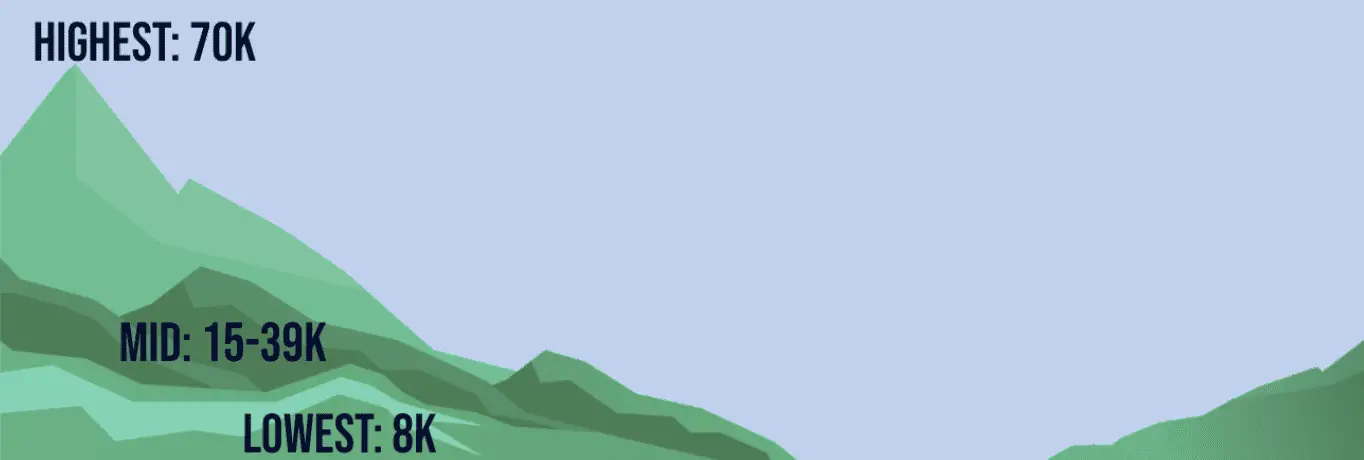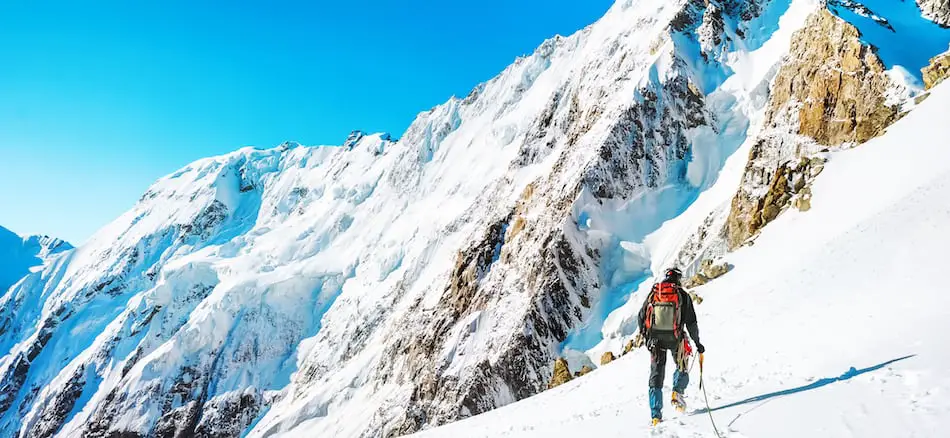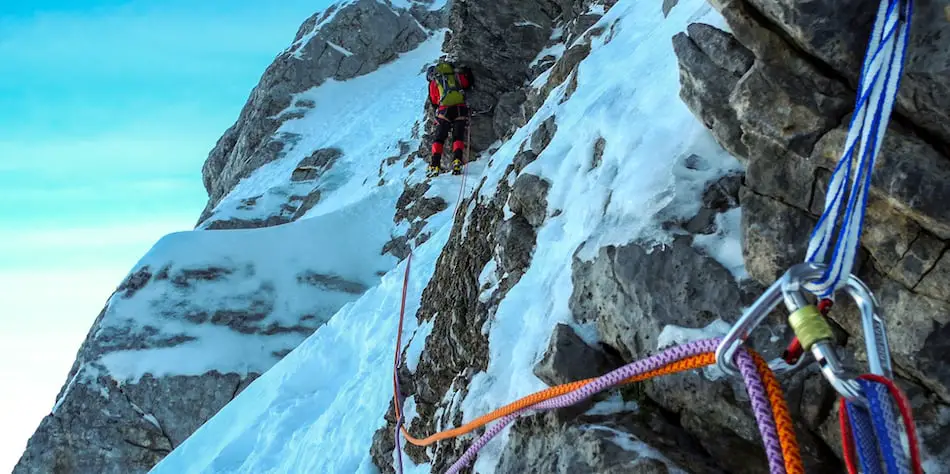
K2 is one of the most challenging mountains in the world and in this article, I go how much it costs to climb K2.
Climbing K2 will usually cost between $15,000 and $39,000 . Experienced mountaineers can get away with spending as little as $8,000, while those looking for a more comprehensive guided experience might need to spend as much as $70,000.
There are a variety of costs associated with climbing K2. At minimum you will be paying for the permits, peak fee, environmental fee and service fee. For people who aren’t full-time mountaineers, it will probably also be necessary to pay for a guide service. Most mountaineering companies’ Basic Service packages will support you with domestic transportation, emergency equipment and transfer up to 50kg of your personal baggage to basecamp. Full Service expeditions will provide additional benefits like a personal climbing sherpa, 4-5 oxygen cylinders with the equipment required to deploy them, and double occupancy lodging above base camp. In the rest of this article, I go more in depth about the costs associated with climbing K2.
Pro Climbers With No Need For Tours: $8,000

If you are a pro who is confident in your ability to climb without sherpas, you would need a team of ideally 7 climbers to join you. This is because the peak fee and permit fee covers a team of up to 7, with additional members having to pay nearly $2000. The fixed costs per team are as follows:
- Peak fee: $7,200
- Permit: $5,400
- Environmental fee: $68
- Service fee: $300
A rescue bond of $10,000 is also required, and will be refunded if it is not used. Overall, per person (in a team of seven) the fixed cost would be just under $2000, with a $1,500 deposit. As for costs that are more flexible in nature, your team will need:
- To travel with a Pakistani Army “Liaison Officer” (L.O.) and cover the L.O.’s allowances, equipment, meals etc.
- Meals which can cost under $1.50 USD per meal
- Housing before and after the trek, with the average price per night for a hotel being around $14 per person.
- Flights to and from your destination, which usually cost about $2000 round trip (from the United States)
It is also worth noting that after accounting for hidden costs, climbing from the south side i.e. from Pakistan is generally half the price compared to climbing from the north side i.e. China.
Finally, it should be noted that this is written with the assumption that experienced mountaineers will own all of the necessary gear to climb K2. Purchasing all the gear needed could add an additional $10,000 to the trip cost.
Guided Tours: $15,000-$70,000

For those who may need an extra hand, a guide is critical. Despite K2 being the second highest peak in the world, it is nowhere near as commercialized as Everest due to the weather conditions and steepness. This makes is important to higher a guiding company unless you are absolutely certain of your ability to climb the mountain by yourself.
The most expensive companies, such as Madision Mountaineering, will include luxuries such as:
- Internet access at the basecamp
- Multiple sheraps
- HAPs (high altitude porters)
- Nearly unlimited oxygen
These companies will require a downpayment of roughly one-third of the entire cost of the tour and be able to easily accommodate any dietary requirements. These companies can cost anywhere from $60,000-$70,000. If you have a little more experience and are looking to save some money, you may want to explore the mid-range operators.
These mid-range operators will not be locals, and will provide significantly less oxygen and sherpas. Additionally, there will be extensive physical requirements and or tests in order to ensure that everyone has a good chance of summiting – and more importantly surviving! These operators will cost around $30,000.
Finally one can opt for local operators, which will push the price of the trip closer to the $12,000-$15,000 range per person. Therefore, if you are confident in your foreign communication skills this may be a better and a more economic option for you.
What Trip Is Right For Me?
To understand what type of support you are going to need, you will need to understand how difficult it is to climb K2. Summiting this mountain requires crossing thousands of feet of technical, steep, demanding terrain, under constant threat of avalanche risk and hypothermia.
Before even attempting K2, you should have at least a decade of mountaineering experience under your belt and have summited a minimum of one other 8,000er. If you fulfill these conditions, you might qualify for one of the higher-end touring packages, who will offer a more comprehensive guiding experience. As you gain more and more experience, you can look at pursuing cheaper options.
Those who want to attempt to summit with limited support, or with a low-end touring package, will need to show that they have previously climbed highly technical peaks above 8,0000 meters and at minimum be comfortable with technical skills like ice climbing, fixing ropes, and technical snow travel. Therefore, if you have climbed less than three mountains with peaks above 8,000 meters, and do not have grade 3 technical skills, you may consider taking a tour in the upper price range.
If you have very limited experience but still want to experience the Himalaya, you do have the opportunity to climb to base camp which is approximately 5,000 meters. The price of this trek with a mountaineering company would cost under $2,000, and last roughly two to three weeks. On the trek to basecamp, you will most likely have the opportunity to:
- see views from the Trango Towers
- trek through the snout of the Biafo Glacier
- reach Paiju by following the Braldu river
Considering K2 is notorious for life-threatening weather, anyone with limited experience should trek during June to August to minimize their exposure to risks.
How Long Does it Take to Climb K2?

Along with cost, how long it takes to climb K2 is another question that people also have regarding the world’s deadliest summit.
An average expedition to climb K2 will take anywhere from six to eight weeks. Highly experienced mountaineers, however, can climb the peak in less than a week if they time it right.
For most people, climbing K2 will require what are called ‘siege tactics’. This is when mountaineers trek partway up the mountain, set up camp, and then retreat to sleep at a lower camp. The next day they hike up farther, push their camp higher, and retreat again. This helps with ‘acclimatization’, the process of getting your body used to the lower oxygen levels that you’ll face high on the mountain. It also allows you to move heavy gear like tents up the mountain in advance, so they’re already in place when you go for your summit push.
The downside of siege tactics, though, is that they take a long time. You can spend up to four weeks establishing camps and getting used to the oxygen levels. You might also spend long periods stuck at base camp, waiting for a 3-4 day period of clear weather where you can push for the summit; all of this together means that climbing K2 can often take as much as 2 months.
The very best mountaineers might attempt to climb K2 ‘alpine style’. This is where they acclimatize on a different, safer peak (such as Broad Peak), wait for a weather window, and then hike in the K2’s basecamp and make an attempt at the summit, all in one push. If everything goes right, these climbers can theoretically only spend 3-4 days on the mountain in total. However, it’s important to note that the climber will need to spend time on another mountain acclimatizing, so total trip time is still in the 1-2 week range.
